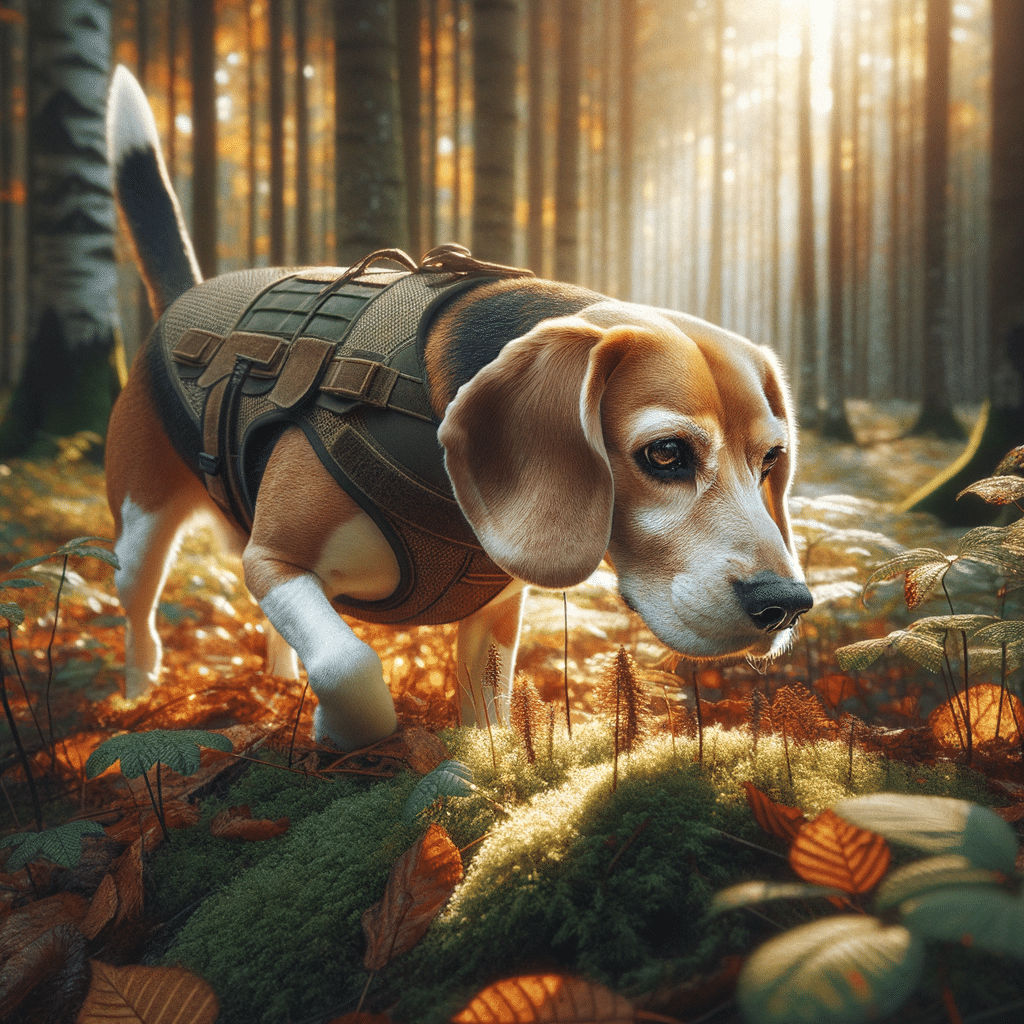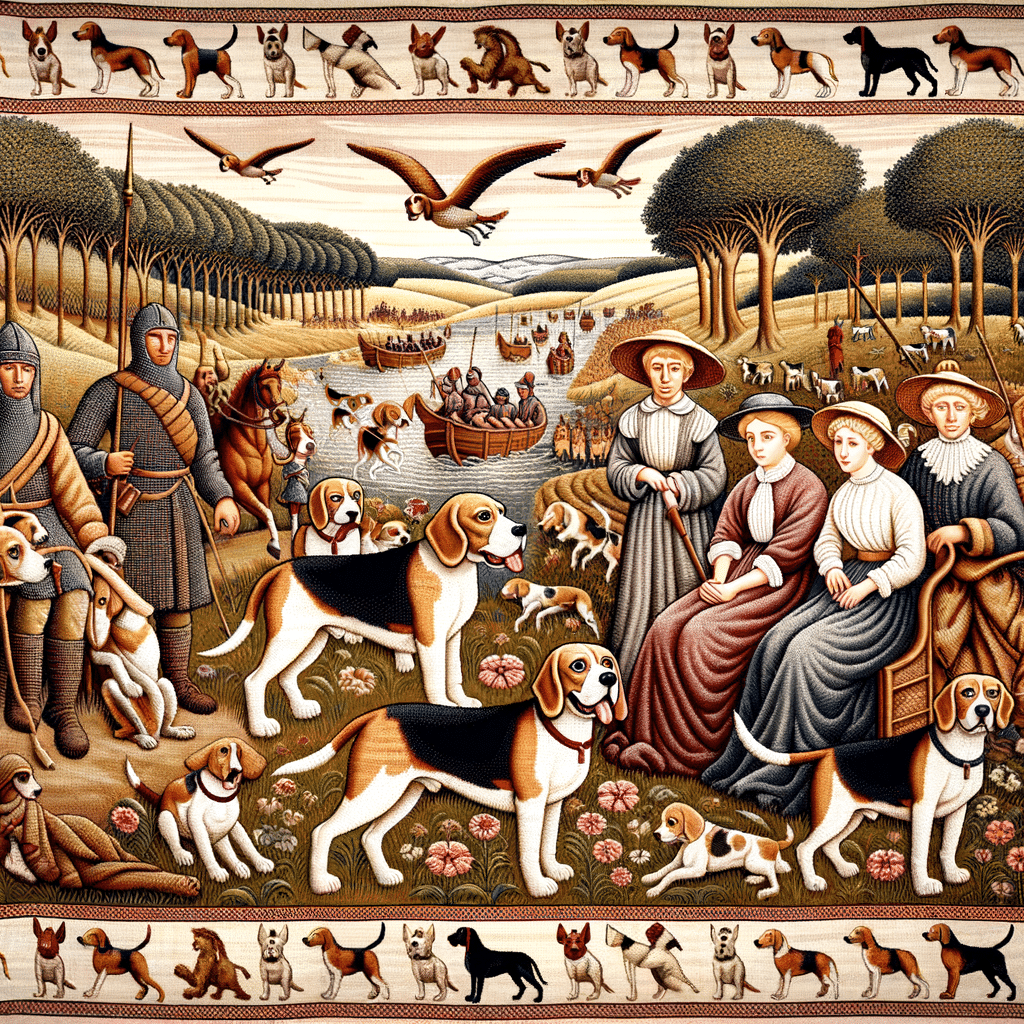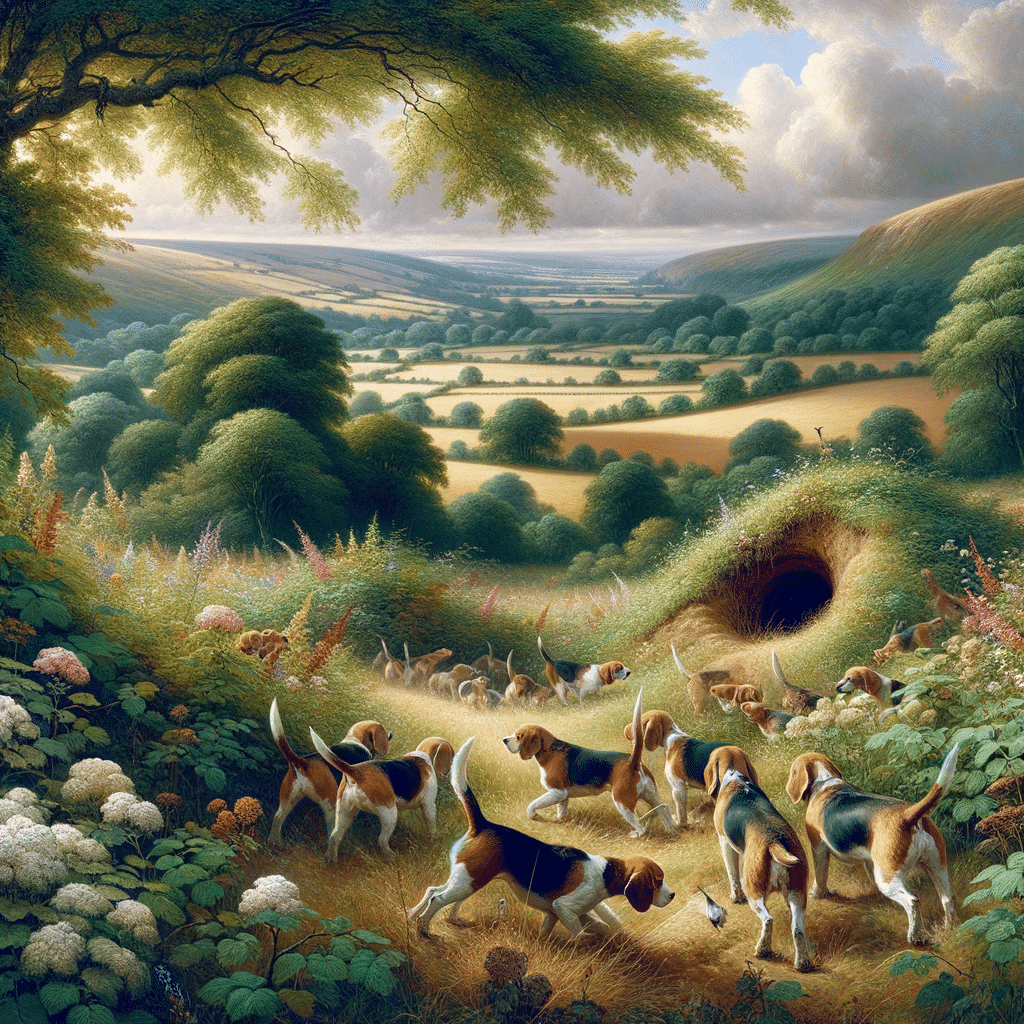Among the myriad dog breeds, the beagle captures hearts with its distinctive appearance and personality. Recognized by their floppy ears and expressive eyes, beagles have a rich history that spans continents and centuries. Initially bred as hunting dogs with an acute sense of smell, their role has changed significantly.
In This Article
While their popularity as family pets has grown, many intriguing aspects of beagles remain relatively unknown to the broader public. Keep reading Beagle Breed Facts: Essential Information to learn more about this beloved breed.
Beyond their charming demeanor, beagles are an interesting breed, one of versatility and adaptability. From aiding in modern tasks like detecting pregnancies in polar bears to historical feats, this breed exhibits unique capabilities. Their keen olfactory senses have even placed them on the front lines of various detection roles, showcasing an ability to sniff out more than just hunting game.
Highlights
- Beagles' storied past reflects their transformation from hunters to companion animals.
- These dogs have a unique blend of physical attributes and behavioral characteristics.
- Beagles fulfill diverse roles, from family pets to participants in cutting-edge detection work.
Historical Significance
The beagle has a history closely intertwined with human societies. This section will uncover the breed’s rich historical significance by tracing its origins and highlighting notable beagles that have left their mark throughout history.
Beagle Origins
Beagle breed origins can be traced back to Great Britain, where it evolved from breeds like the Talbot hound, the southern hound, and possibly the harrier. By the time of William the Conqueror, smaller hounds fitting descriptions similar to the beagle were established for their proficiency in hunting. Historical records also suggest that beagles bear lineage to ancient Greek dogs from as far back as the 5th century BCE.
During the reign of Queen Elizabeth I, “pocket beagles” were in vogue. They were small enough to fit into a “pocket” or a saddlebag, making them favored companions among the nobility for hunting.
Famous Beagles in History
Throughout history, beagles have endeared themselves to influential figures. Queen Elizabeth I cherished her small pocket beagles, which she used for hunting small game.
In more modern times, President Lyndon Johnson owned Beagles named “Him” and “Her,” which he frequently paraded at the White House. The “Beagle Brigade,” on the other hand, is a team of beagles used by the United States Department of Agriculture for their unparalleled sense of smell to detect food items in travelers’ luggage. These skills contribute to safeguarding American agriculture.
Physical and Behavioral Traits
The beagle is recognized for its compact size, robust hunting instinct, and amiable and lively demeanor. Understanding its physical characteristics and behavior is vital for appreciating this breed’s unique nature.
Distinctive Features
Beagles typically present with muscular legs and long, floppy ears that enhance their auditory understanding. Their coat displays various colors, commonly including shades of brown, tan, or lemon, often combined with white. A notable physical trait is the white-tipped tail, a hallmark of purebred beagles, serving as a visibility aid during hunting expeditions.
A renowned scent hound, the beagle’s olfactory prowess is due to an extraordinary number of scent receptors. They possess approximately 220 million, one of the highest among dog breeds. This acute sense of smell makes them exceptional at scent tracking.
Beagle Behavior and Temperament
The beagle’s temperament is friendly and outgoing. It is inherently social, getting along well with children and other pets, reflecting its pack mentality. However, it may be obese without adequate exercise, as its lively nature requires regular physical activity.
Vocalizations like barking, howling, and the characteristic baying sound are typical behaviors from their hound heritage. These sounds were historically essential for hunters to locate their packs while tracking game. The beagle’s vocal nature requires appropriate training to manage in residential settings.
The beagle’s personality and size help it adapt well to different living conditions. However, it can experience separation anxiety and should not be left alone for extended periods, as isolation can lead to unwanted behaviors. Regular companionship and activity are crucial for its well-being. Additionally, awareness of potential health problems such as obesity, ear infections, and hip dysplasia is essential for proper care.
Role and Utility
Beagles have transcended their traditional role as hunting companions to become invaluable assets in various specialized fields due to their acute sense of smell and tenacious work ethic.
Beagles as Working Dogs
Beagle Brigade: A notable example of beagles as working dogs is their role in the Beagle Brigade. This unit operates under the U.S. Department of Agriculture’s Animal and Plant Health Inspection Service and is typically stationed at airports and borders. Here, beagles sniff out agricultural products in travelers’ luggage to prevent the entry of harmful pests and diseases into the United States.
Homeland Security: Within the broader scope of Homeland Security, Beagles serve as detection dogs, adept at identifying a spectrum of odors from explosives to drugs. Their small size, non-threatening appearance, and excellent olfactory capabilities make them well-suited for such sensitive tasks in crowded settings like airports.
Beagles in Research and Security
Detection Dogs: Beagles are widely recognized for their skill as scent hounds, trained to detect specific odors. From explosives to bedbugs, their roles in research and security are diverse, benefiting various industries and enforcement agencies.
Animal Testing Alternative: In recent years, there has been a shift towards utilizing beagles’ keen sense of smell in non-invasive research, reducing the need for them in animal testing. Their ability to detect specific odors has historical roots in hunting but now paves the way for their service in more humanitarian and scientific roles.
Cultural Impact and Care
The beagle’s position in pop culture is firmly established, and its requirements as a family pet are specific. This section delves into the cultural significance of beagles and the essentials of their care.
Beagles in Pop Culture
Beagles have made a significant mark in pop culture. In the comic strip Peanuts, Snoopy is arguably the most famous beagle in the comic strip Peanuts, representing the breed’s curious and spirited nature. This animated character has elevated the beagle’s status to one of American culture’s most recognizable dog breeds.
Celebrities like Elvis Presley and Barry Manilow have also shared their lives with beagles, further cementing this breed’s place in the limelight. Beagles have also starred in films such as Shiloh, and their affable nature makes them popular as pets on-screen and in homes.
Caring for a Beagle
Potential owners should note that this breed requires consistent training and regular exercise to maintain a healthy lifestyle when caring for a beagle. Beagles are energetic and need daily activities to keep them engaged, as well as mental stimulation to prevent boredom.
- Exercise: A beagle should exercise at least an hour of exercise per day.
- Grooming: Regular brushing helps manage their shedding coats.
- Diet: Monitor their weight, as beagles are prone to obesity. A balanced diet of high-quality dog food is recommended.
- Mental stimulation: Interactive toys and scent games can keep a beagle’s mind active.
If you are a beagle owner, ensure your dog has a varied diet and avoid unhealthy foods to prevent weight gain. Take your pet to regular vet check-ups to keep these family pets thriving. Proper care and attention to their needs ensure beagles remain a loving and playful part of any home.
Frequently Asked Questions
This section addresses some of the most intriguing questions regarding the beagle breed, shedding light on their unique traits, behavioral patterns, and historical significance.
What traits make beagles a unique breed among dogs?
Beagles are distinct among dog breeds for their exceptional olfactory capabilities; they possess over 220 million scent receptors. Their size, pleasant nature, and distinctive bay also contribute to their uniqueness.
How do beagles exhibit their instinct for hunting, and what prey are they traditionally used to track?
Beagles exhibit their hunting instincts through their persistent tracking and ability to follow scents over long distances. Traditionally, they have been used as a scent hound to hunt small game like rabbits and hares.
In what ways does beagle behavior and personality stand out from other dog breeds?
The beagle’s temperament is known as social and friendly. It typically gets along well with other dogs and humans. It is characterized by its playful and curious behavior, which is sometimes accompanied by a mischievous streak.
What are considered to be the rarest variants or types of beagles?
The variant known as the “pocket beagle,” small enough to fit in a large pocket, is considered rare. The “lemon beagle,” identified by its light yellow coat, is also considered a rare variant.
Are there any lesser-known yet historical roles that beagles have played?
Historically, beagles have been more than just hunting dogs; they have also been employed in roles such as detecting pregnancy in animals, including polar bears, and, more recently, screening for diseases in medical settings.
Can you list some beagle behaviors that are seen as quirky or unusual?
Beagles often display a unique behavior known as “reverse sneezing,” a rapid and repeated forced inhalation through the nose. They are also adept escape artists, frequently finding clever ways to overcome barriers when they catch an intriguing scent.






